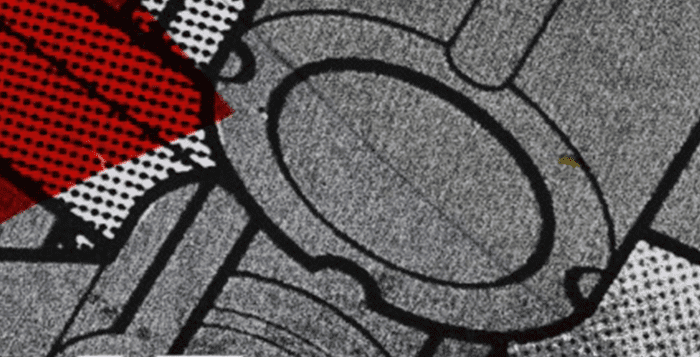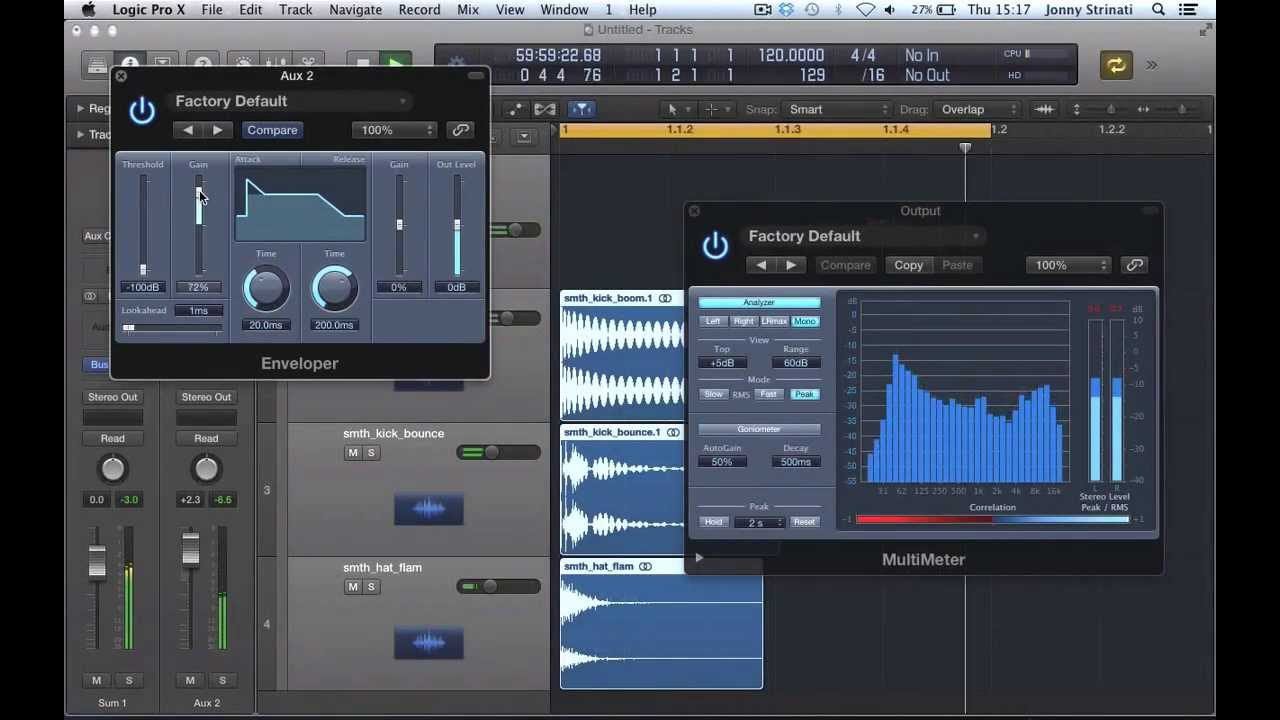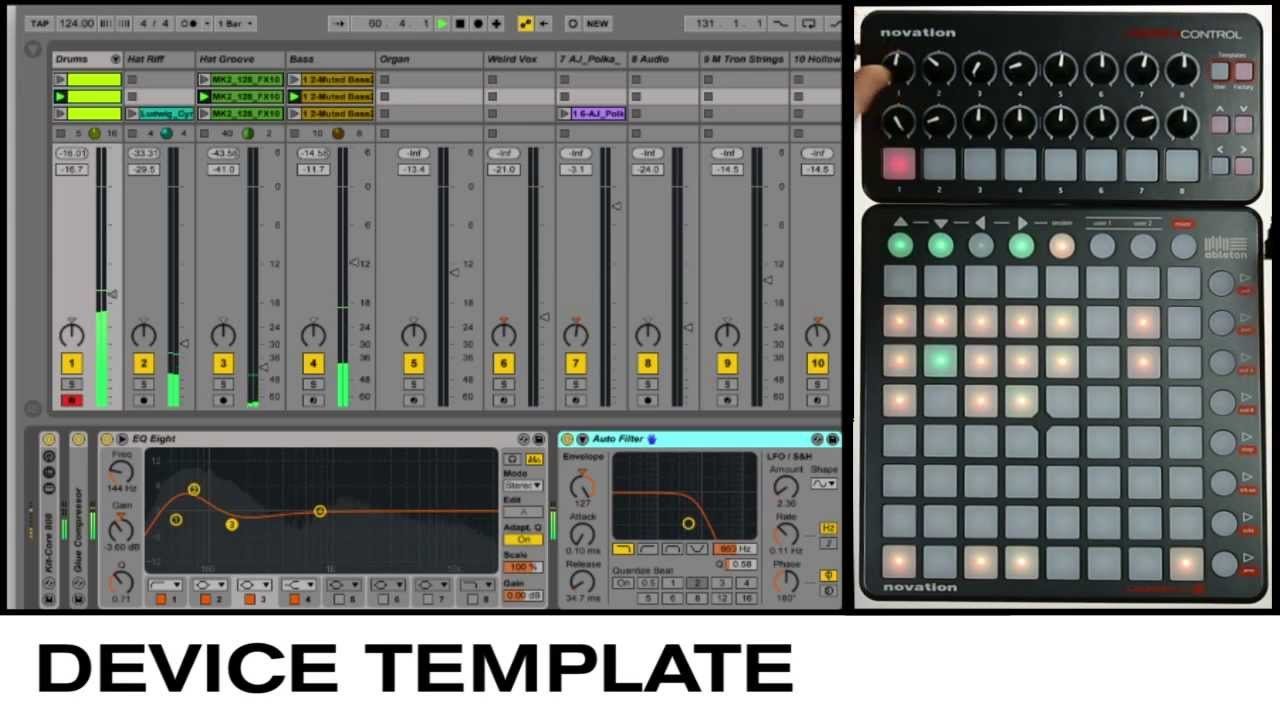ALL IN THE GROOVE
It is vital that every rhythmic element has a place in the groove. Be critical when adding elements and choose samples carefully. Start with the kick and bassline and bring in other elements around them. One good technique is to imagine the elements in the groove having a discussion with each other. Introduce one sound and then counter it with another a few beats later.
KICK & SNARE
Generally the key with Minimal House beats is to keep the kick nice and deep without too much mid or high-end energy so the high frequency elements can ‘breathe’ and inject life into the groove. Choosing drum sounds that fit each other well is also extremely important – if the kick is heavy the snare should feel light and toppy. For this reason 808 and 909 sounds can work particularly well.
MONO VS STEREO
It is always advisable to keep the kick (and other bass elements) in mono as these backbone elements of the track are often the most prominent and many club systems are still wired in mono. Having a stereo spread on hi-hats and other percussive elements helps keep the beat interesting and merges the rhythm nicely with synth loops or fx patterns.
EVOLVING EFFECTS
Keep effects changing constantly by automating them, especially reverbs and delays. Turn up reverb sends occasionally on percussion tracks to give your track big reverb splashes at key points. Automate the reverb size too. Put a short slapback delay on the melodic hook and automate the feedback slider and delay times.
RIDE THE 808
You can make deep minimal basslines by using nothing but an 808 kick sample with a long decay. Tune the kick so that it combines well with your main kick drum and add a volume envelope with the attack turned slightly up, so you keep the boom and not the snap of the kick. Adjust the decay to get the right length. Add a little pitch envelope to the sample with pitch shifting either slightly up or down. This kind of wobbly sound is heard in many minimal productions today.
ODD BARS
Try looping percussive sequences at odd numbered bars, like the third or seventh bar, instead of at the regular 4/4 marker for interesting, ever-evolving percussive lines. To build towards a drop insert a ping-pong delay for an instant building carpet of sound.
STABS
When choosing a sample as a raw sound, look for complexity; something which is rich in harmonics and overtones – an obscure jazzy chord is the classic example. Vocals and organic sounds also work well. Try running your sound through a bit-crusher to add some dirt, then apply a low pass filter controlled by an envelope to give the sound some shape. Saturation and compression will really start to bring the sound alive and give it the classic punchy-techy sound.
Assign tone-shaping parameters to various controls to get as much variability in the sound as possible – the velocity mapped to the volume, cutoff and decay for example, and the mod wheel to a pitch LFO and reverb send. Some 3/16th delay will help give a strong rhythmic emphasis to the stabs.
WHITE HATS
Make a free-flowing techno hat pattern by using a white noise oscillator playing a shuffling pattern (short 16th notes with some triplets thrown in) with the volume envelope decay/release controls constantly changing using automation.
LESS IS MORE
Your track is destined to be rocking a big club system. If you cram in every idea and then some more, the track will soon sound messy on a big rig. At some point you should sit back and selectively delete parts that don’t add much to keep everything simple. This is minimal dance music: having a few choice elements that work well together is your ultimate aim.
INFINITE PADS
Soundscapes and pads give depth to a mix and play an essential part in intros, outros and breakdowns. To make extending pad sounds insert your chosen pad sample, then insert the same loop again after the first and reverse it. Join the two together using your sequencer’s crossfade function. Instant ever-changing pad variations!
WOBBLY SYNTHS
To create the classic ‘moving tuning’ synth line, pull up a sawtooth wave on your preferred synth and automate the tuning knob so that it moves slowly up and/or down. Another way to do this is to assign an LFO to the tuning of the oscillators. This kind of technique is also often heard used on other elements such as percussion and even basslines.
TIDY PERCUSSION
Keep percussion hits neat and tidy by adjusting the decay of the samples according to the groove of your track. In general the percussion hits in minimal techno are short. Also remember to check the decay of your kick drum sample. Too long a decay and the kick will interfere with the bassline and too short a decay will not yield enough punch.
THE MIGHTY WHOOSH
Plain white noise hits and sweeps are common in minimal techno. Slap a compressor over a white noise effect with your kick drum feeding the sidechain input for some solid pumping action. Remember to cut out low frequencies using a hi-pass filter on the white noise sound to keep your mix clean.
COMPLEX RHYTHMICAL TEXTURES
Take a vocal sound, set it looping but with a relatively short loop size. Now, map the loop start position to a rhythmical step sequencer. This means the start point of the loop will jump around in sync with the steps in the sequencer, by however much you set on each step. Immediately you will notice your sound has transformed from a stuttering sound, to something much more complex.
Try sending the cutoff to the step sequencer also, and maybe the sample rate too – you’ll quickly start to see how incredibly rich complex sounds can spring out of nowhere.










